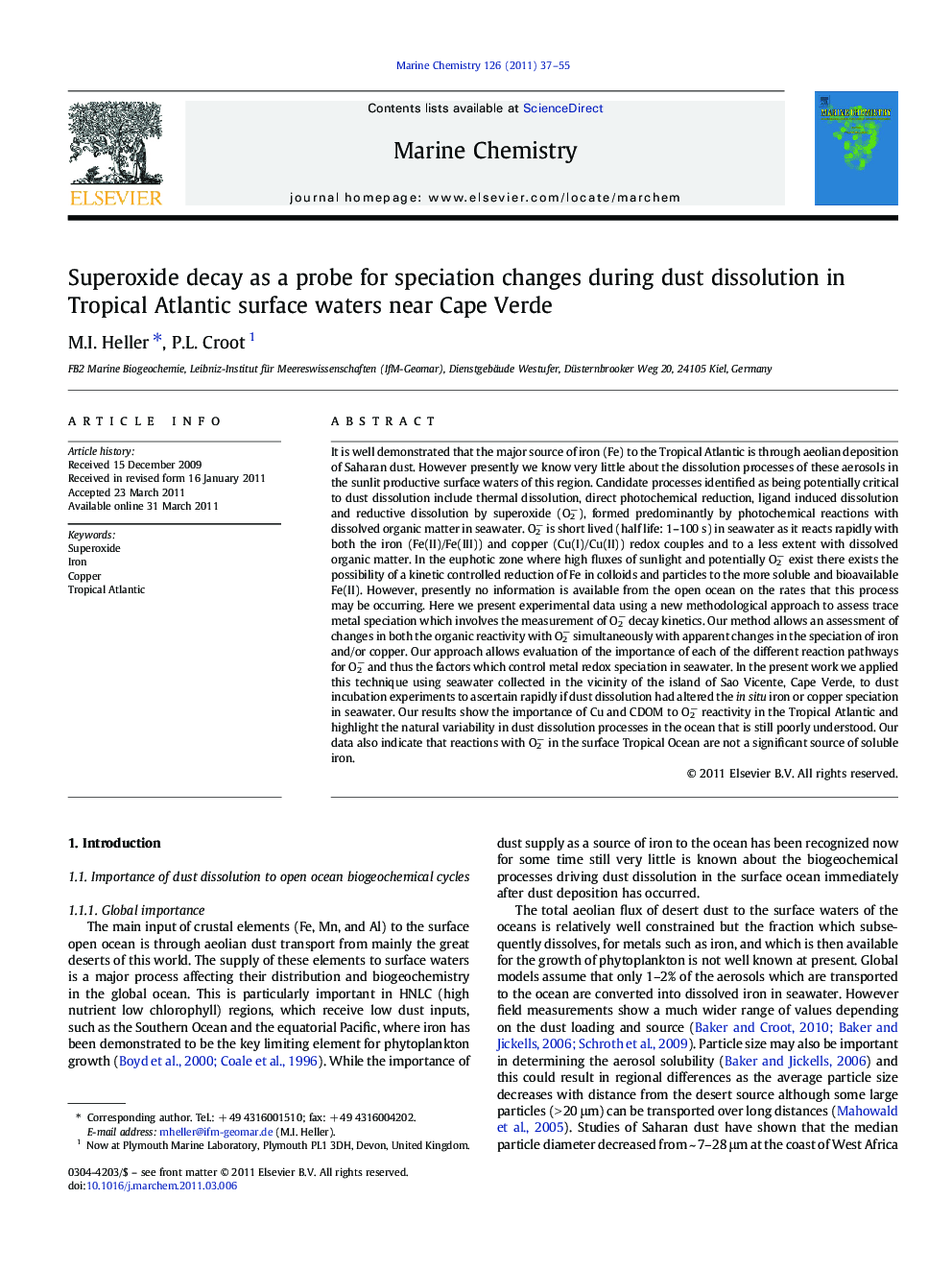| کد مقاله | کد نشریه | سال انتشار | مقاله انگلیسی | نسخه تمام متن |
|---|---|---|---|---|
| 1261969 | 1496698 | 2011 | 19 صفحه PDF | دانلود رایگان |

It is well demonstrated that the major source of iron (Fe) to the Tropical Atlantic is through aeolian deposition of Saharan dust. However presently we know very little about the dissolution processes of these aerosols in the sunlit productive surface waters of this region. Candidate processes identified as being potentially critical to dust dissolution include thermal dissolution, direct photochemical reduction, ligand induced dissolution and reductive dissolution by superoxide (O2−), formed predominantly by photochemical reactions with dissolved organic matter in seawater. O2− is short lived (half life: 1–100 s) in seawater as it reacts rapidly with both the iron (Fe(II)/Fe(III)) and copper (Cu(I)/Cu(II)) redox couples and to a less extent with dissolved organic matter. In the euphotic zone where high fluxes of sunlight and potentially O2− exist there exists the possibility of a kinetic controlled reduction of Fe in colloids and particles to the more soluble and bioavailable Fe(II). However, presently no information is available from the open ocean on the rates that this process may be occurring. Here we present experimental data using a new methodological approach to assess trace metal speciation which involves the measurement of O2− decay kinetics. Our method allows an assessment of changes in both the organic reactivity with O2− simultaneously with apparent changes in the speciation of iron and/or copper. Our approach allows evaluation of the importance of each of the different reaction pathways for O2− and thus the factors which control metal redox speciation in seawater. In the present work we applied this technique using seawater collected in the vicinity of the island of Sao Vicente, Cape Verde, to dust incubation experiments to ascertain rapidly if dust dissolution had altered the in situ iron or copper speciation in seawater. Our results show the importance of Cu and CDOM to O2− reactivity in the Tropical Atlantic and highlight the natural variability in dust dissolution processes in the ocean that is still poorly understood. Our data also indicate that reactions with O2− in the surface Tropical Ocean are not a significant source of soluble iron.
Research highlights
► Superoxide reactivity as a probe for metal speciation in seawater.
► Processes influencing dust dissolution in the surface ocean.
► Superoxide is not a significant reductant for aerosol iron in the open ocean.
► Copper is the dominant sink for superoxide at TENATSO.
Journal: Marine Chemistry - Volume 126, Issues 1–4, 20 September 2011, Pages 37–55